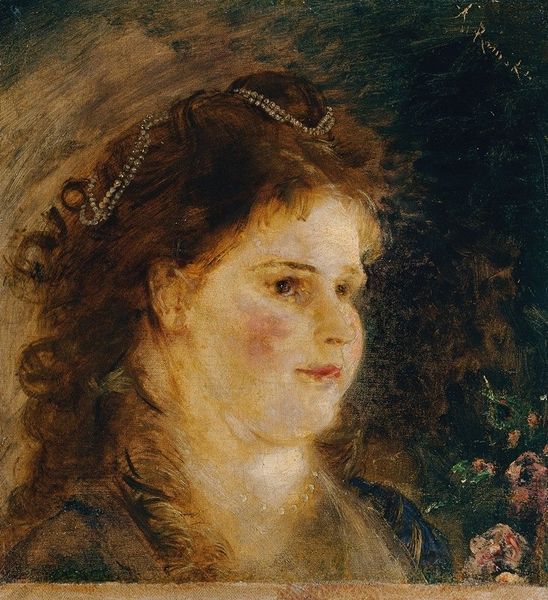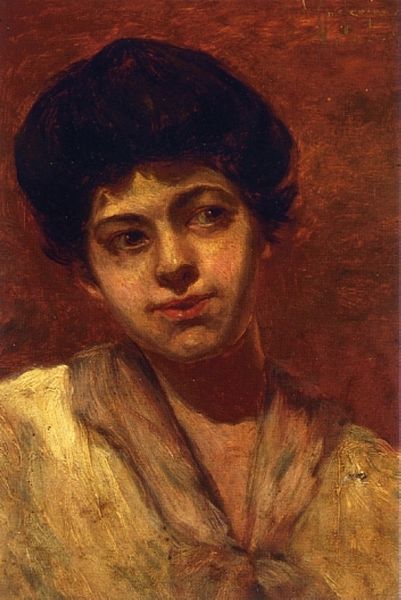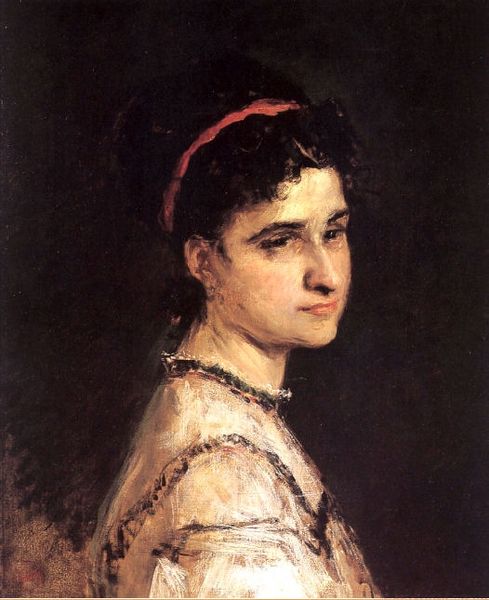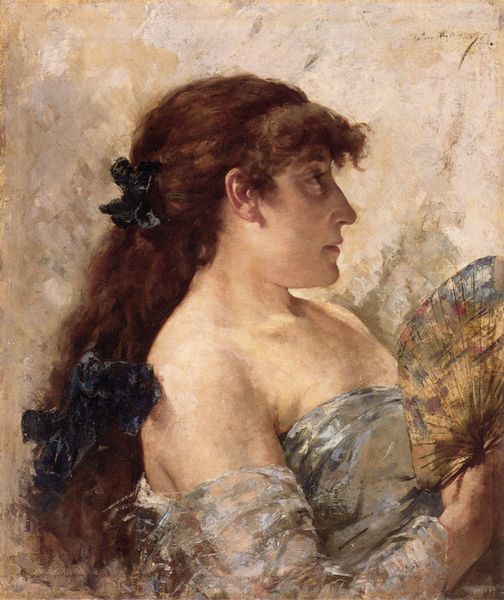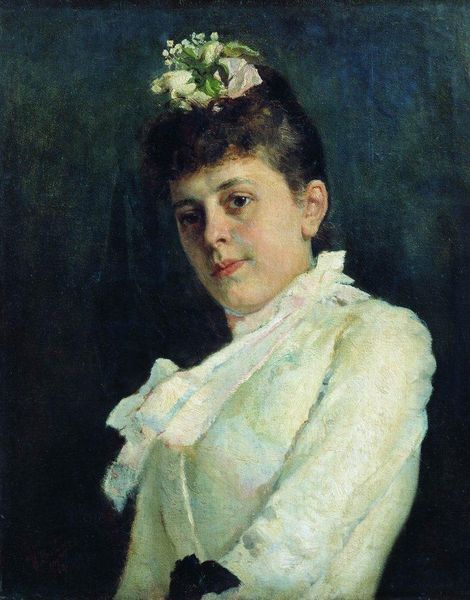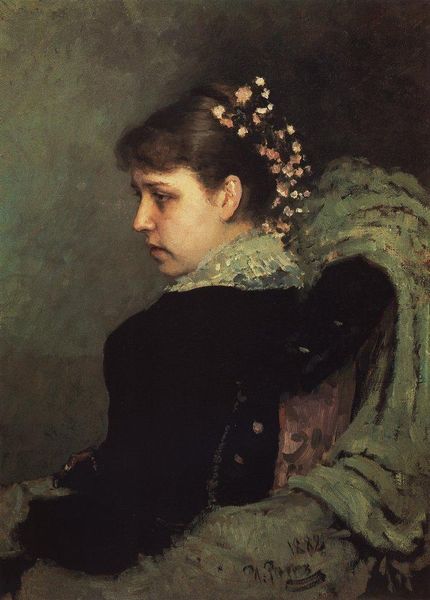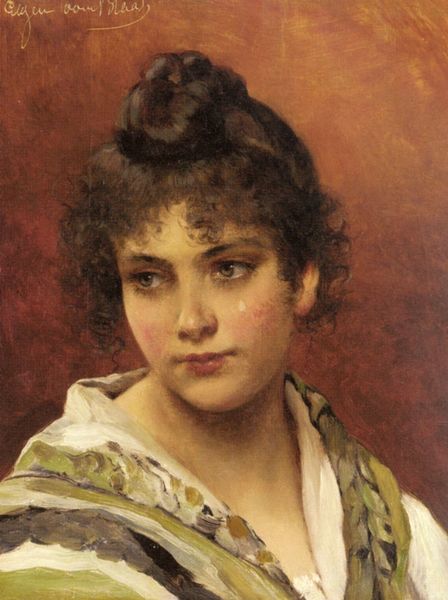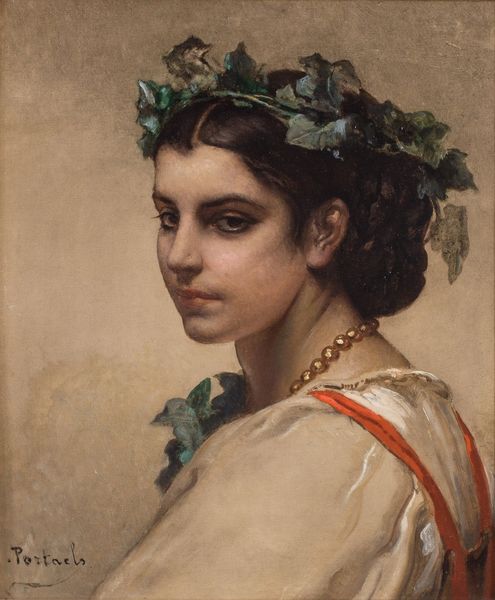
Copyright: Public domain
Editor: This is Konstantin Korovin's "Portrait of Nadezhda Komarovskaya," painted in 1910 using oil paint. It's fascinating; the thick brushstrokes create a sense of immediacy, almost as if the painting was completed in one sitting. How can we interpret this piece within its historical context? Curator: That's a great observation! Given Korovin’s association with the Russian Avant-Garde, we have to consider the socio-political climate. This portrait, with its expressive brushwork, appears during a period of great upheaval in Russia, right before World War I and the Revolution. The looser style could be seen as a rejection of academic formality, mirroring the broader societal shifts and calls for radical change in other aspects of life. Do you see anything in the subject's expression that reinforces that? Editor: I notice she has a direct, almost confrontational gaze. It does feel less posed than many of the portraits from that era. Perhaps that signifies some form of modern assertion? Curator: Precisely. This "un-idealized" representation moves away from portraying women solely as objects of beauty. Instead, the work emphasizes individuality and presence. Furthermore, think about who Komarovskaya might have been. Was she part of the artistic or intellectual circles? Knowing this could provide more context as to why Korovin chose to portray her this way. The art world certainly plays its own part in defining whose story is told. Editor: That’s really interesting! I hadn’t thought about how the subject's identity might affect the way she's portrayed, reflecting certain rising counter-culture ideals. Curator: Exactly. Now we must ask, whose narrative is being showcased in museums like this, and how does it interact with power structures outside the institution's walls? Keep in mind also the role exhibitions and patrons played in shaping both the artist's career and this specific work's prominence. Editor: So, understanding a piece of art like this goes beyond just its aesthetic value; it's deeply intertwined with its surrounding culture. Curator: Indeed! By analyzing it this way, we discover not just an artistic creation, but also a visual artifact embodying history.
Comments
No comments
Be the first to comment and join the conversation on the ultimate creative platform.
